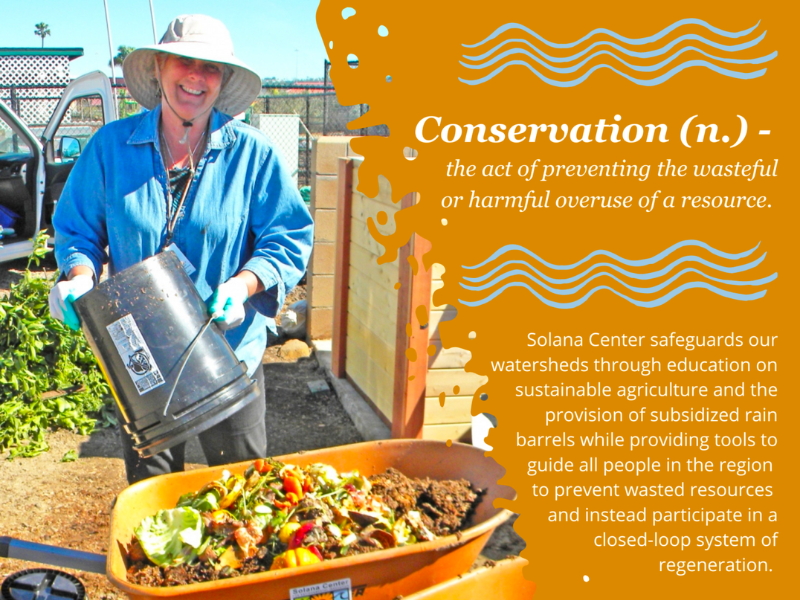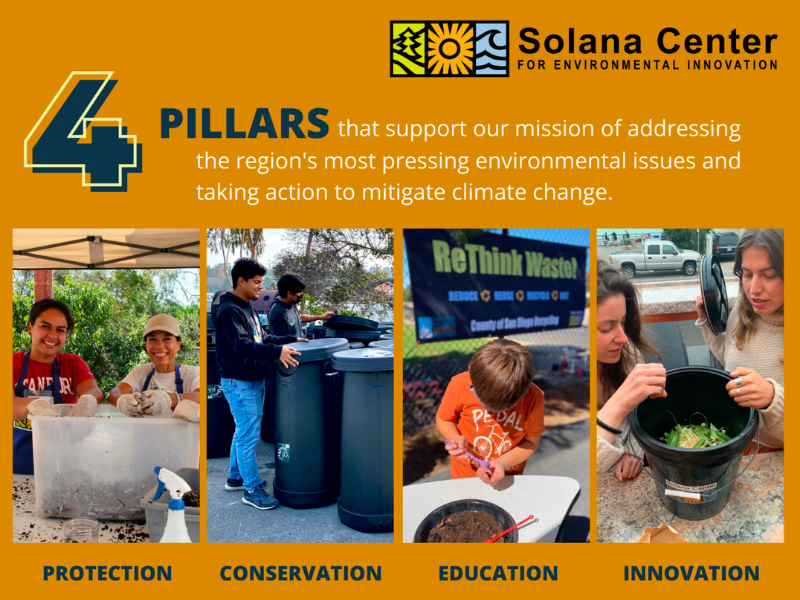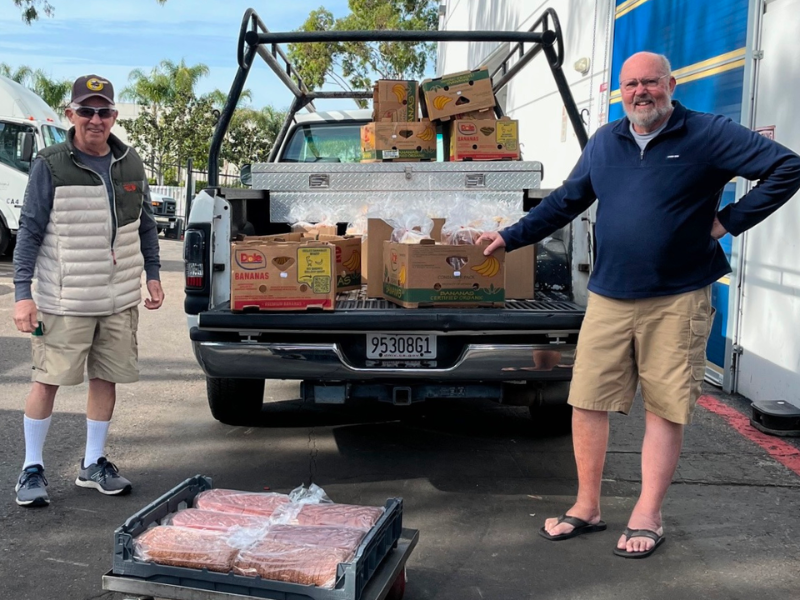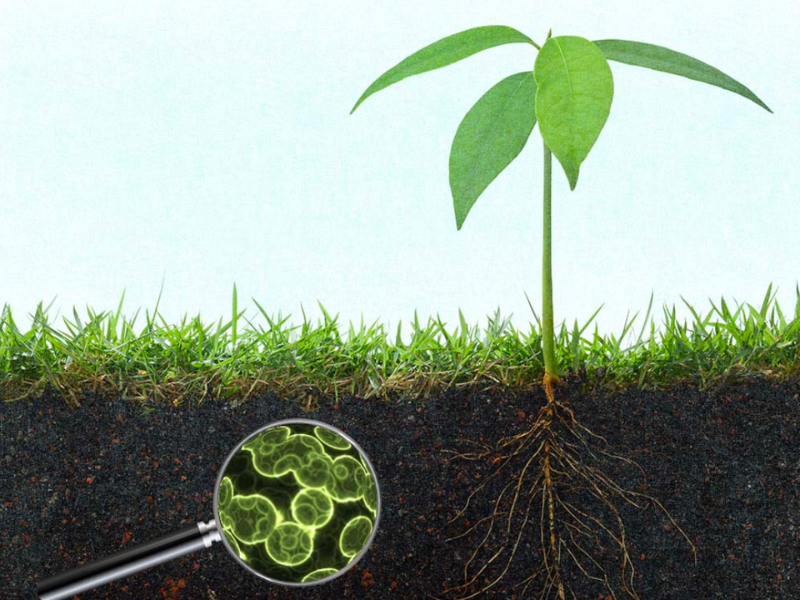Conservation: Programming to nurture the natural world

At Solana Center for Environmental Innovation, we center our work around four pillars: protection, conservation, education, and innovation. Each pillar provides the structure needed to fully address the impacts of climate change in the San Diego region:
–Protection, or the safeguarding of the rights of humans and living things to healthy environments with sufficient natural resources;
–Conservation, or the stewarding and restoration of natural features such as soil, water, and an atmosphere with a smaller concentration of greenhouse gases;
–Education, or the provision of the knowledge and tools necessary for community members, organizations, and businesses to take an active role in creating a more sustainable world; and
–Innovation, or the ability to let go of existing frameworks of what is to imagine what could be, prioritizing the well-being of the planet and its creatures and establishing closed-loop processes to manage resources.
jioji

oji
What does Solana Center conserve?
Our programs are designed to help everyone conserve the important resources of food, soil, and water. In the process, we conserve energy as well.
Food accounts for 8% of global greenhouse gas emissions (Washington Post, 2021,) and between 30-40% of food in the U.S. is wasted (USDA, 2023.) That 8% is especially planet-warming, given that methane has 80 times the heating over the first 20 years that it reaches the atmosphere (EDF, 2023.) In a country where more than 10% of households are food insecure (USDA, 2021,) this is both shameful and presents an opportunity to do better as a society.
Solana Center conducts business audits and consultations to help organizations address the twin problems of hunger and food waste. Because of Senate Bill 1383, California’s Short-Lived Climate Pollutant Reduction Strategy, large food-generating businesses such as large-scale grocery stores and restaurants must now donate a proportion of their edible food that would otherwise be sent to the landfill. They must also recycle a proportion of organic materials in the green bin.
mij

Food donations from a grocery store, on their way to people in need.
On a more individual scale, Solana Center educates community members to prevent food waste and conserve resources through our workshops, webinars, and outreach. The resources, energy, and labor that go into the production, processing, transportation, storage, and disposal of food are also wasted when it is thrown away. Find more information about upcoming learning opportunities on our events page or visit our food waste resource page!
Some amount of food waste is inevitable. However, by striving to turn those scraps into compost rather than sending them to the landfill, the food is transformed rather than disposed of. Whereas food in the landfill does not receive enough oxygen to decompose, food that is incorporated with yard trimmings and aerated properly can break down into a soil amendment beneficial to plants and to the growing of crops.
Instead of artificial fertilizers, which kill microbes and flood plants with a high concentration of a certain nutrient instead of a balanced composition of nutrients (think of feeding a child sugar water rather than a balanced diet,) compost made from food scraps and other organic matter provides balanced sustenance to plants, feeding microbes that rejuvenate the soil and sequester carbon.
“Compost made from food scraps and other organic matter provides balanced sustenance to plants, feeding microbes that rejuvenate the soil and sequester carbon.”
jkik

These little microbes are key to breaking down organic materials and turning them into nutrients plants can use.
What does conservation have to do with soil?
Soil has a huge impact on agricultural production, as well as carbon sequestration, water conservation, and watershed protection. If we do not properly steward soil in the region, ensuring its continued health through sustainable farming practices, farmers will produce fewer crops over time, leading to a reduction in the food supply. Soil is also an effective carbon sink, taking in the carbon of the organic matter that decomposes into it. Finally, healthy soil is an incredible tool for retaining water on a farm, ranch, or property. According to the University of California Agriculture and Natural Resources Department, “only a 5% increase in organic material quadruples…soil’s water holding capacity.” When farmers and gardeners use compost to retain water, they can water less often, saving water as well as the energy needed to process and transport it. Compost also protects watersheds from the excess nitrates of artificial fertilizers.
Water: an invaluable resource
If you’ve lived in California for any length of time, you probably know why Solana Center advocates for the conservation of water along with all natural resources. The state seems almost perpetually in drought, with any discussion of rain punctuated by “we really need it.”
It’s true. According to the U.S. Bureau of Reclamation in a 2020 article, only 0.5% of the Earth’s water is available fresh water. Solana Center provides several programs to reduce water usage and promote water capture: workshops on water wise farming and gardening, rain barrel sales, and discounted home water meter sales.
How can you help conserve?
Would you like to contribute to establishing more sustainable processes of resource management in the San Diego region? Please consider working with us, volunteering with us in any role or capacity that is comfortable to you, or donating to help us develop new programs that transform waste and ensure a healthy region for years to come.
